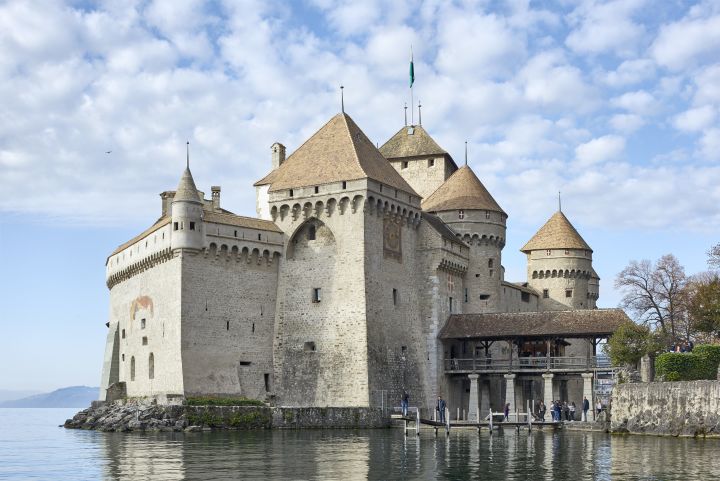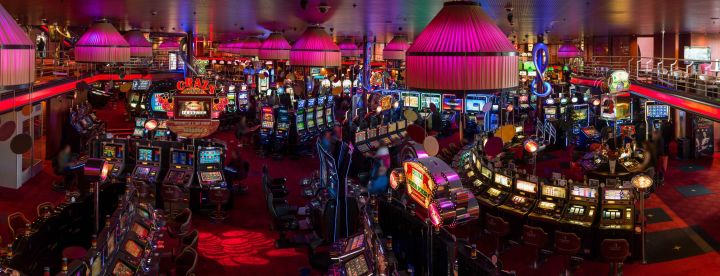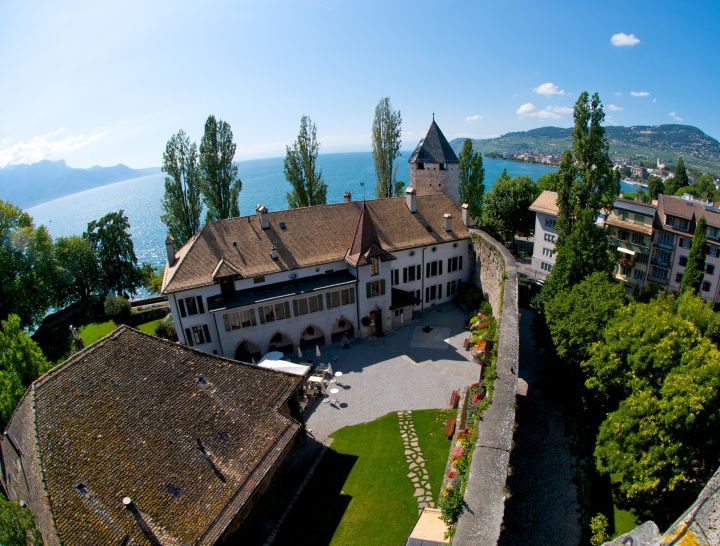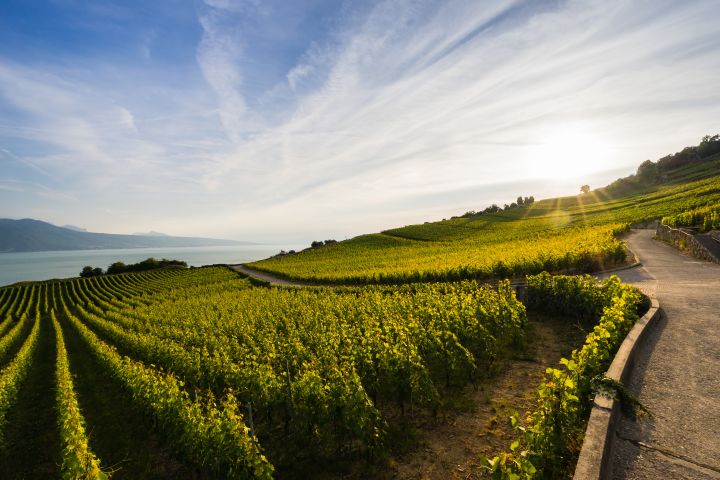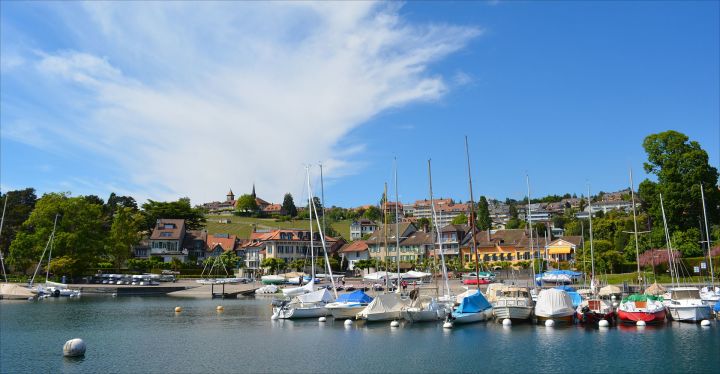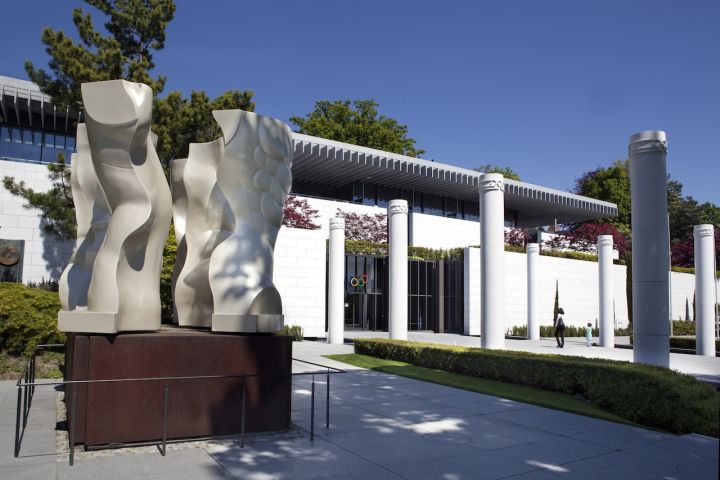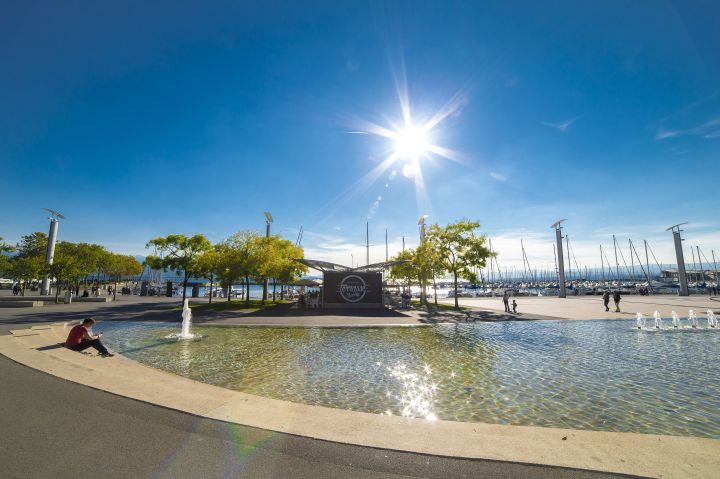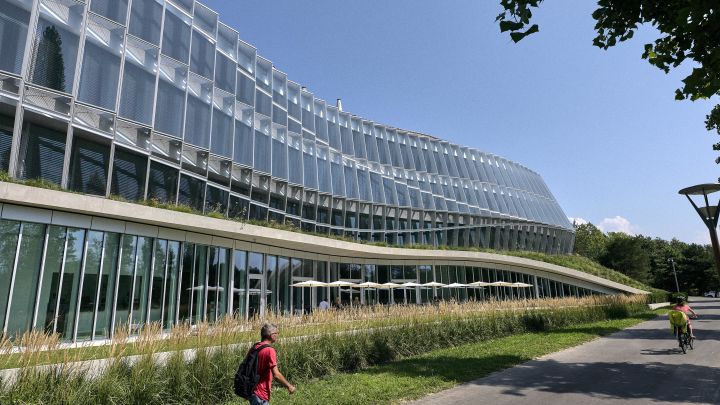In 990, Sigerich, Archbishop of Canterbury, returned to England from Rome and documented the stages on his journey, a route known even to the Romans. His itinerary is now considered the oldest description of the ViaFrancigena through Europe. After the fall of the Roman Empire, the Frankenstrasse remained one of the major arterial roads, used by traders, soldiers and crowned heads of state. Since 1300, it has been regarded as the most important pilgrims’ path in Europe, crossing Switzerland via the Jura and Alps.
The Swiss stage runs through a variety of landscapes and is without doubt also one of the most spectacular pilgrims’ paths in Europe. The route from Sainte-Croix to Vuiteboeuf leads past unique sections of cart tracks then alongside the quiet Venoge to Lac Léman. Stops at Romainmôtier Abbey and the Roman mosaics in Orbe are highly recommended.
From Lausanne, the ViaFrancigena runs through the vineyards of Lavaux to the bend in the Rhone. From the ancient city of Octodurus, it winds through the narrow pass shaped by the wild waters of the Drance to the northern slopes of the Grossen Sankt Bernhard-Pass. In Val d’Entremont, medieval villages line the route, which peaks in the aptly-named Combe des Morts.
The Swiss stage runs through a variety of landscapes and is without doubt also one of the most spectacular pilgrims’ paths in Europe. The route from Sainte-Croix to Vuiteboeuf leads past unique sections of cart tracks then alongside the quiet Venoge to Lac Léman. Stops at Romainmôtier Abbey and the Roman mosaics in Orbe are highly recommended.
From Lausanne, the ViaFrancigena runs through the vineyards of Lavaux to the bend in the Rhone. From the ancient city of Octodurus, it winds through the narrow pass shaped by the wild waters of the Drance to the northern slopes of the Grossen Sankt Bernhard-Pass. In Val d’Entremont, medieval villages line the route, which peaks in the aptly-named Combe des Morts.
-
In Veytaux, near Montreux, Chillon Castle has stood proudly on its rocky island for nearly a thousand years. Made famous by Jean-Jacques Rousseau’s novel “Julie, or the New Heloise” or Lord Byron’s poem “The Prisoner of Chillon”, this fortress is a true treasure from the past, a must-see.
-
The Casino Barrière in Montreux extends over an entertainment area of about 10’000 m2, with slot machines, gaming tables, electronic games, poker… It also houses 3 restaurants, 2 bars, 2 terraces, a superb swimming pool as well as the former "Mountain Studios", an area now dedicated to Queen.
-
The Castle and its History Built in the 13th century by Pierre de Savoie, the castle of La Tour-de-Peilz served as a fortress and refuge, as an observation post of traffic along lake Geneva, and as a customs post.
-
Take a walk through some of the most beautiful scenery in Switzerland: the UNESCO-listed Lavaux vineyard terraces are criss-crossed with marked trails with stunning views over Lake Geneva and the Alps. Little trains on wheels help you up the incline so you can enjoy a walk at your own pace.
-
Just on the outskirts of Lausanne, the Guillemin deer-park and playground offers a superb view over the lake and the Alps.
-
The Olympic Museum presents the cornerstones of olympism – sport, art and education – through its ultra-modern, interactive facilities. The most visited museum in Lausanne was founded by the ICO on the banks of Lake Geneva.
-
It features three sumptuous Lausanne gardens, situated one after the other along the quays: the Denantou, the Elysée, a little further back, and the Olympic Park, but also the rose garden of Place du Général Guisan, which boasts more than 130 different species of rose. Finally, from the CGN landing stages located at the bottom of the Dapples gardens you can embark for a unique cruise over Lake Geneva.
-
Here, each can truly do their own thing, because it has everything: history with a capital H, sport, boats and picnics, theatre and camping, strolls and competitions, delicacies and silence. To visitors of the Vaud capital, Expo 64, the national exhibition, is still regarded as boasting an exceptional leisure area by the lake which has nothing like the appearance it had before.
-
The beautiful 12th century Romanesque church beside the lake at this small village to the west of Lausanne is a moving witness to medieval times.






